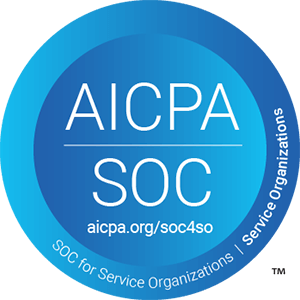Remote working is the new norm due to the Covid-19 pandemic and is here to stay for a very long time.
Amidst the chaos, as managers are pushing their team members to meet deadlines while adapting to the changing norms, it is important that they also make their team members feel “included” at every step.
This is crucial as remote working often leads to miscommunication, discrepancies and other issues since we miss out on the body language and the same frequency of interaction and before.
After all, transitioning to remote working is a new concept for many of us.
Since employee engagement software is now beyond hosting a few fun-sessions, here are a tried and tested employee engagement ideas that will ensure that your team feels a part of the bigger picture and help you run an efficient, productive and motivated remote team.
1. Re-design your Company Culture with Remote Working in Mind
You are meeting your deadlines, closing deals, starting new projects, and much more.
And you are not the only one doing this – your team is with you.
It is important, now more than ever, than your company culture fully embraces remote employees and acknowledges their contribution.
One of the ways to do this is by creating strategies that involve all the employees during a call, a presentation, or a meeting so that they all feel included and appreciated.
2. Use Ice-breakers
A lot of employees including managers might find it difficult to talk much over a call about anything apart from work.
While there are many tools that facilitate communication between employees, it is also necessary that you break the ice and get to know your virtual colleagues better.
You can always look up for a few ice breaker questions for remote employees that might help you strike the right chord with a fellow colleague.
3. Provide Context and Frequent Feedback
Unless your team understands the purpose of what they have been asked to do, the big picture, there are chances that they miss out on the zeal to match yours.
With remote working, providing the context at every step would ensure that your team members are aware of the goals and stay focused towards achieving them.
Similarly, proving frequent feedback to remote employees can be a game-changer to keep them motivated and connected.
Guide to Giving Constructive Feedback
Master the Art of Giving Constructive Feedback to your Remote Teams.
Frequent feedback through daily stand-ups, weekly meetings, one on one sessions also ensure that you monitor the progress of your employees and their work without micromanaging them.
4. Encourage Peer-to-peer Feedback
As much as it is crucial that managers talk to their team members to provide feedback, it is not their sole responsibility to do so.
To encourage teamwork, make sure that every member of the team steps in to share what is not working and what has worked in the past, along with how would they like things to progress.
Peer to peer feedback allows employees to take ownership and stay more focused without holding any sort of grudge against the manager for favouritism or biased decisions.

5. Appreciate Employees more Frequently
Appreciating employees (esp., in remote culture) for their work is a good way to keep them motivated and engaged. Building a powerful connect with them, enhancing their productivity and mental-health.
An employee whose hard work is recognized is also more likely to keep up with the winning streak.
However, this also means that as a manager you ought to find team members with low performance and find ways to encourage them.
6. Provide the Right Tools
Technology has made remote work a reality. It has made it possible for teams to communicate and chat from far ends of the world.
Introduce your team to a set of remote work tools and check with them often if they would like to suggest any new tool.
It is just about choosing the right ones that everyone is comfortable with and get going.
7. Set Clear Expectations and Goals
Setting clear expectations with your remote team is essential. Let then know what you expect from them when you assign a task and give them an opportunity to share their views as well.
A simple way to do so is by setting OKRs for the team.
Objectives and key results (OKR) setting is a method that allows employees to collaboratively set and execute personal, team-level, and company-wide goals using measurable results.
This ensures that everyone moves in the same direction.

8. Assign Clear Responsibilities
When a team member has clear responsibilities and deadlines, it infuses a sense of responsibility in the team and it becomes easier for them to manage their time and attain a goal – which ultimately means that the company is moving ahead in the right direction.
9. Encourage Knowledge Sharing Through Virtual Meetings
A crucial element that remote working puts in the backseat is frequent knowledge sharing among peers.
And no matter where your team is, it is important that they keep brushing up their skills and learn new ropes to keep growing on a personal and professional level.
One of the best ways to do so is to arrange weekly or monthly sessions addressing specific points through video conferencing or webinars.
10. Briefing and Debriefing
Since remote working is the new norm, it is time to find new ways to brief the team about new projects or changes to ensure your targets are met without hampering work at any level.
Build pragmatic strategies around briefing to ensure the team is on the same page before commencing a project.
Similarly, also hold debriefing sessions to understand what went wrong, what could have been done differently, etc. from the team so that you are well-equipped the next time.
11. Daily Stand-up Meetings
Daily stand-up meetings are one of the best employee engagement ideas that can keep your company working like a well-oiled machine.
When used effectively, daily stand-up meetings can remove a lot of hurdles and boost team’s morale, help meet targets, avoid micromanagement, among other things since this quick discussion means that there is open communication among everyone.

12. One on One Meeting
Nothing like interacting with your team members through one on one meetings to take a download of their progress, appreciate them and boost their morale, help develop their skillsets, and much more.
The next best thing to interacting with someone in person, holding dedicated and frequent one on one meetings with each employee can improve communication and the overall performance of the team and the company.
13. Group Learning
Another way to keep your employees engaged is by introducing group learning sessions.
An important aspect of performance management, encouraging your team to take up online courses together affect their performance in a positive way.
This is not only crucial to their personal growth but with the new skillset and knowledge in place, you too can grow your company in new verticals.
14. Virtual Coffee Breaks
With remote working, it is no surprise to see personal communication taking a backseat.
A good way to break the ice among employees and managers and boost interactions is through virtual coffee breaks.
Similar to sharing a cup of coffee with a teammate in a regular office setting, this helps everyone to step out of their professional demeanour and connect on a personal level talking about anything other than work.
When personal relationships foster, it has a good impact on teamwork as well.

15. Meetings Over Lunch
The world connects over food, so why not your remote team?
Sharing a meal, even if virtually, is another good way to foster relationships between managers and teammates.
If time allows, you can also have a cook-off to add some fun to it.
16. Video Tour of their Office Space/ Home Surrounding
This is a fun-filled activity to see how your other teammates have set their home office and getting a glimpse of their home or surroundings.
With social interactions taking a backseat, this can help break the ice between teams as well.
17. Virtual Non-work Learning Sessions
With no scope of team lunches and off-sites for the next few months, engaging in virtual sessions around stressbusting activities can be a good way to encourage communication and help teammates engage on a personal level.
You can also introduce a few sessions around yoga, cooking, origami, etc. that would also give team members a chance to pick up a new hobby.
18. Online Game Competitions
Nothing like some online game sessions to encourage teamwork and competitiveness amongst remote employees.
With a plethora of games available online, all you have to do is pick one that can host maximum team members in one go so that no one is left out.
19. Team Health Challenges
Blame it on sheer laziness or lack of motivation, we often tend to put our physical health on the backseat.
Limitations that remote working not only affects our physical health due to less activity but also our mental health.
However, introducing a few team health challenges can ensure your team stays physically active and mentally stress-free.
A good way to make certain that this plan does not fail, make teams of two giving them the responsibility to monitor each other’s progress so that no one derails from the plan.

20. Measure Employee’s Happiness Quotient Through Surveys
While you are introducing many employee engagement ideas to make sure that your team stays motivated, the next step is to make certain that your plans are yielding results, i.e. your team is happy.
Introducing surveys can help you chalk out better employee engagement plans that your team wants and eliminate ideas that are not working.
21. Ditch 9-5 Mindset
Since everyone has a different routine at home with added responsibilities, a good way to keep your calm is to ditch the idea that everyone would be available at the same time.
As a remote manager, it is essential that you trust your team and set in only when necessary.
Summing Up
There are chances that not only is your team working remotely for the first time but it is your first time as a remote manager.
Amidst the work deadline, it is easy to forget empathy and ignore the importance of connecting with each other on a personal level.
However, the better you connect with your team, and they amongst themselves, higher are the chances for better team management and writing a new success story.
Frequently Asked Questions
1.What are the 4 essentials of employee engagement?
The 4 essentials of employee engagement are Communication, Recognition, Development, and Well-being. Effective communication ensures alignment, recognition boosts morale, development helps with career progression, and well-being ensures that employees are supported emotionally and physically.
2. How to improve staff engagement?
To improve staff engagement, provide regular feedback, recognize contributions, set clear goals, and offer opportunities for professional development. Foster a supportive and open environment where employees feel valued and heard.
3. What are the 5 Rs of engagement?
The 5 Rs of engagement are Recognition, Reward, Respect, Relationships, and Responsibility. These factors drive motivation and ensure employees feel appreciated, respected, connected, and empowered in their roles.











